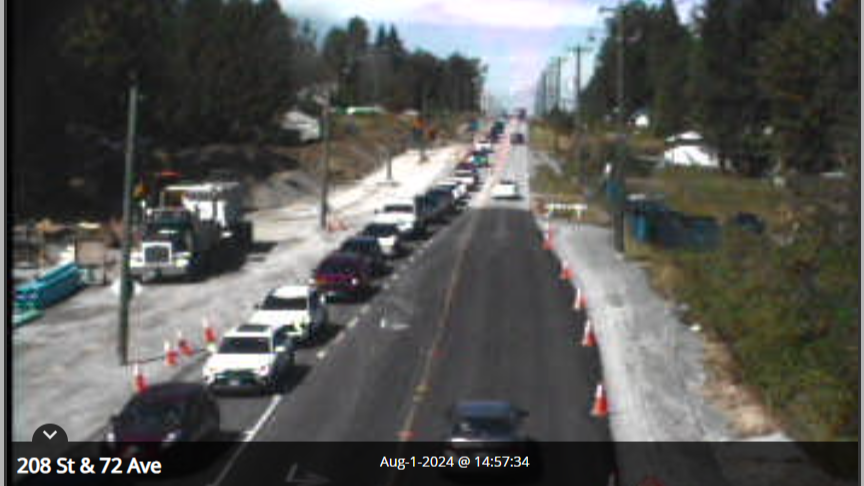'Uncharted territory': What rising rates mean for homebuyers
Michelle Zadikian, BNN Bloomberg • August 18, 2022

Whether you’re a first-time homebuyer or an existing homeowner, the dynamics of the housing market are quickly changing as borrowing costs soar.
“First-time homebuyers, or people that are looking at breaking into the market, they're having to go through more stringent stress testing today than clients have had to in the past,” said Joe Sammut, a broker at Ontario-based Mortgage Architects, in a phone interview.
The mortgage stress test (or minimum qualifying rate) requires borrowers to prove they can handle their mortgage payment at the greater of 5.25 per cent or their contract rate plus two percentage points. With many variable rates now sitting at just north of four per cent, many buyers are having to qualify for a mortgage at six per cent or higher, rendering the 5.25 per cent threshold essentially not applicable.
Rob McLister, a mortgage strategist with MortgageLogic.news, said based on the lowest nationally-available variable rate for an uninsured borrower – 4.15 per cent at Alterna Bank – a homebuyer would be stress tested at a rate of 6.15 per cent.
His math indicates the qualifying rate would cut the purchasing power for a typical prime mortgage borrower almost eight per cent.
“For a household earning $100,000 a year and putting 20 per cent down on a new home, that cuts their maximum possible purchase price by almost $47,000, assuming a 30-year amortization and no other debts,” he said in an email.
ADJUSTABLE VS VARIABLE
While new homebuyers are busy revising their budgets, existing homeowners with a floating-rate mortgage – or adjustable mortgage – will see their payments rise.
“Where people get kind of confused is the difference between a variable rate and an adjustable rate. An adjustable rate is a floating-rate mortgage that has a payment and interest rate that move with prime rates,” McLister said in a phone interview.
The majority of variable-rate mortgages in Canada have a fixed payment so when interest rates rise, the homeowner will pay more interest and less principal, but their monthly payment overall is stable.
Adjustable-rate mortgage payments fluctuate since they’re tied to prime rates, resulting in uncertainty for those homeowners.
Variable-rate mortgage payments will only increase when interest rates rise so high that the payment doesn’t cover the full interest portion, McLister said.
With mortgage rates rapidly changing, staying informed of your options is crucial at this point in time, Sammut said.
“The main message would be to stay put. Stay put with your variable, if it's a good variable. Stay put with your fixed, if it's a good fix. However, if you want to explore your options and you want certainty, you have to phone your lender to find out what is available and what's being offered to you. Knowledge is power,” Sammut said.
He said he has advised some of his clients to consider locking in for a shorter two- or three-year term until rates stabilize.
While new homebuyers are busy revising their budgets, existing homeowners with a floating-rate mortgage – or adjustable mortgage – will see their payments rise.
“Where people get kind of confused is the difference between a variable rate and an adjustable rate. An adjustable rate is a floating-rate mortgage that has a payment and interest rate that move with prime rates,” McLister said in a phone interview.
The majority of variable-rate mortgages in Canada have a fixed payment so when interest rates rise, the homeowner will pay more interest and less principal, but their monthly payment overall is stable.
Adjustable-rate mortgage payments fluctuate since they’re tied to prime rates, resulting in uncertainty for those homeowners.
Variable-rate mortgage payments will only increase when interest rates rise so high that the payment doesn’t cover the full interest portion, McLister said.
With mortgage rates rapidly changing, staying informed of your options is crucial at this point in time, Sammut said.
“The main message would be to stay put. Stay put with your variable, if it's a good variable. Stay put with your fixed, if it's a good fix. However, if you want to explore your options and you want certainty, you have to phone your lender to find out what is available and what's being offered to you. Knowledge is power,” Sammut said.
He said he has advised some of his clients to consider locking in for a shorter two- or three-year term until rates stabilize.
UNCHARTED TERRITORY
For Nasma Ali, a broker and the founder of One Group, client calls have taken a significant turn in this “uncharted territory” where they’re now extremely cautious.
“It used to be that people would come to us and be like, ‘I want to move.’ And that's it. What are the next steps? You know, let's start looking,” she said in a phone interview.
“Now it's completely different. Now, it's more like, ‘I'm worried about rates, I'm worried about the market, is there a recession’ — all of these factors and this fear and uncertainty now that exists, where in the past few years have never existed.”
Her approach and advice to buyers is to have a cushion built into their budget when buying a home.
“I want people to know, not just what your max number [for a home purchase] is based on your income. I want you to know what your monthly payments are and are you comfortable with that payment?” she said.
“I think they should still have a cushion. People should not be buying something where they are completely stretched thin with the monthly payments. That's a situation people will find themselves in where they need to sell when rates go up.”

Developers in British Columbia are offering steep discounts as new inventory keeps stacking up, fuelling competition for buyers who can afford to shop around. In Kelowna, Mission Group had a one-day flash sale on Saturday on all vacant inventory at its Alma on Abbott development, a boutique lakefront community located in Pandosy Village that was completed in October. Mission Group president Luke Turri said half of Alma’s 87 units – ranging from studios to three-bedrooms – need to be sold. With the discount, one- and two-bedroom units will be roughly $425,000 to $505,000. “We realize that we have to meet the market where it’s at,” said Turri, who’s been in the field for 20 years. He said today’s buyers are highly informed and cautious. “Buyers are seeing price corrections, incentive programs, construction delays, interest rates swinging, and they need certainty, they need credibility, and so for us the focus is, how do we create that momentum?” Turri said Alma had a successful pre-sale launch, and Mission Group had always anticipated having available inventory after completion due to its target audience of end users, rather than investors. In its latest monthly report, the Association of Interior Realtors said the market maintained a “gradual and steady pace” in October. Still, inventory levels are elevated compared to historical norms. Interior Realtors reported 8,938 active listings at the end of last month, comparable to fall 2024 levels, but well above the 10-year average. 👉 Read the Article Here






